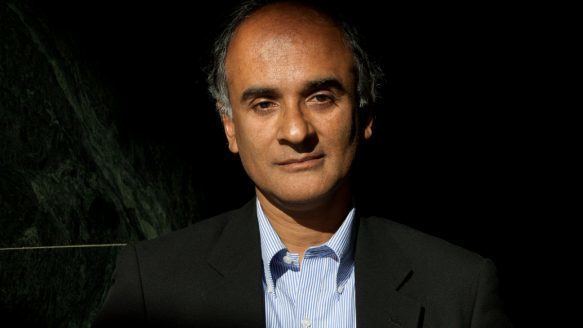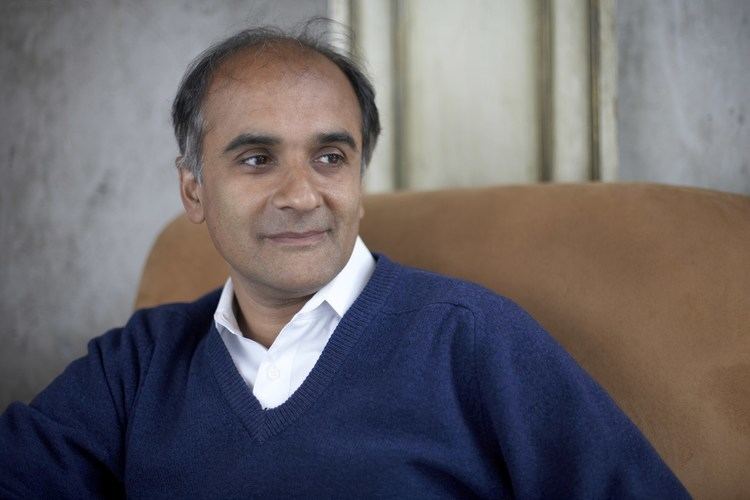Spouse Hiroko Takeuchi Role Essayist | Name Pico Iyer Movies dragon devil | |
Parents Nandini Iyer, Raghavan N. Iyer Books The Art of Stillness: Adventur, The Global Soul, Video night in Kathmandu, The Man Within My Head, The lady and the monk Similar People Raghavan N Iyer, Graham Greene, Alexander McCall Smith, John Berendt, Jane Smiley Profiles | ||
Matthieu ricard in conversation with pico iyer
Siddharth Pico Raghavan Iyer (Tamil: சித்தார்த் பைக்கோ ராகவன் ஐயர்; born 11 February 1957), known as Pico Iyer, is a British-born essayist and novelist of Indian origin, best known for his travel writing. He is the author of numerous books on crossing cultures including Video Night in Kathmandu, The Lady and the Monk and The Global Soul. An essayist for Time since 1986, he also publishes regularly in Harper's, The New York Review of Books, The New York Times, and many other publications.
Contents
- Matthieu ricard in conversation with pico iyer
- The dalai lama on nonviolent opposition pico iyer
- Early life
- Career
- Personal life
- Writings
- References

The dalai lama on nonviolent opposition pico iyer
Early life

Iyer was born Siddharth Pico Raghavan Iyer in Oxford, England, the son of Indian parents. His father was Raghavan N. Iyer, an Oxford philosopher and political theorist,. His mother is the religious scholar Nandini Nanak Mehta. He is great-great-grandson of Indian Gujarati writer Mahipatram Nilkanth. Both of his parents grew up in India then went to England for tertiary education. His unusual name is a combination of the Buddha's name, Siddhartha, that of the Florentine neo-Platonist Pico della Mirandola and his father's name. When he was seven, in 1964, his father started working with Center for the Study of Democratic Institutions, a California-based think tank, so the family also moved to California, as his father started teaching at University of California, Santa Barbara (1965–1986). Thus for more than a decade he moved back and forth several times a year between schools and college in England and his parents' home in California. He was a King's Scholar at Eton College, was awarded a Congratulatory Double First in English Literature at Oxford University and then received his second master's in literature at Harvard. In 2017, along with Plácido Domingo and Mario Vargas Llosa, he was awarded an honorary doctorate (in Humane Letters) by Chapman University.
Career

He taught writing and literature at Harvard before joining Time in 1982 as a writer on world affairs. Since then he has traveled widely, from North Korea to Easter Island, and from Paraguay to Ethiopia, while writing eight works of non-fiction and two novels, including Video Night in Kathmandu, The Lady and the Monk, The Global Soul and The Man Within My Head. He is also a frequent speaker at literary festivals and universities around the world, who delivered popular TED talks in 2013 and 2014 (ref ted.com ref) and has twice been a Fellow at the World Economic Forum in Davos. He appeared in a commercial for "Incredible India" in 2007.
Personal life

Pico Iyer has been based in Nara, Japan since 1992, where he lives with his Japanese wife, Hiroko Takeuchi, the "Lady" of his second book, and her two children from an earlier marriage. The Iyer's family home in Santa Barbara burned down due to a wildfire in 1990, a biographical landmark that may have had a deep impact on his peripatetic perspective on 'being at home' in general. In his literary essays and TED-Talks, he repeatedly said: “For more and more of us, home has really less to do with a piece of soil, than you could say, with a piece of soul.”
Asked if he feels rooted and accepted as a foreigner (regarding his current life in Japan) Iyer replies:
"Japan is therefore an ideal place because I never will be a true citizen here, and will always be an outsider, however long I live here and however well I speak the language. And the society around me is as comfortable with that as I am… I am not rooted in a place, I think, so much as in certain values and affiliations and friendships that I carry everywhere I go; my home is both invisible and portable. But I would gladly stay in this physical location for the rest of my life, and there is nothing in life that I want that it doesn’t have."
Pico Iyer has known the XIV. Dalai Lama since he was in his late teens, when he accompanied his father to Dharamsala, India, in the early 1970s. In discussions about his spirituality, Iyer has mentioned not having a formal meditation practice, but practicing regular solitude, visiting a remote Benedictine hermitage near Big Sur several times a year.
Writings
Having grown up a part of — and apart from — English, American and Indian cultures, he became one of the first writers to take the international airport itself as his subject, along with the associated jet lag, displacement and cultural minglings. He writes often of his delight in living between the cracks and outside fixed categories. Most of his books have been about trying to see from within some society or way of life — revolutionary Cuba, Sufism, Buddhist Kyoto, even global disorientation — but from the larger perspective an outsider can sometimes bring. "I am simply a fairly typical product of a movable sensibility," he wrote in 1993 in Harper's, "living and working in a world that is itself increasingly small and increasingly mongrel. I am a multinational soul on a multinational globe on which more and more countries are as polyglot and restless as airports. Taking planes seems as natural to me as picking up the phone or going to school; I fold up my self and carry it around as if it were an overnight bag."
Iyer has written numerous pieces on world affairs for Time, including 10 cover stories, and the "Woman of the Year" story on Corazon Aquino in 1986. He has written on literature for The New York Review of Books; on globalism for Harper's; on travel for the Financial Times; and on many other themes for The New York Times, National Geographic, The Times Literary Supplement, contributing up to a hundred articles a year to various publications. He has contributed liner-notes for four Leonard Cohen albums. His books have appeared in languages such as Turkish, Russian, and Indonesian, and he has written introductions to more than 40 books, including works by Somerset Maugham, Graham Greene, Michael Ondaatje, Peter Matthiessen, and Isamu Noguchi. He also writes regularly on sport, film, and religion — and especially on the places where mysticism and globalism converge.
He has appeared seven times in the annual Best Spiritual Writing anthology, and three times in the annual Best American Travel Writing anthology, and has served as guest-editor for both. He has also appeared in the Best American Essays anthology.
Iyer's writing goes back and forth between the monastery and the airport — "Thomas Merton on a frequent flier pass," as the Indian writer Pradeep Sebastian has written — and aims, perhaps, to bring new global energies and possibilities into non-fiction. The Utne Reader named him in 1995 as one of 100 Visionaries worldwide who could change your life, while the New Yorker observed that "As a guide to far-flung places, Pico Iyer can hardly be surpassed."
